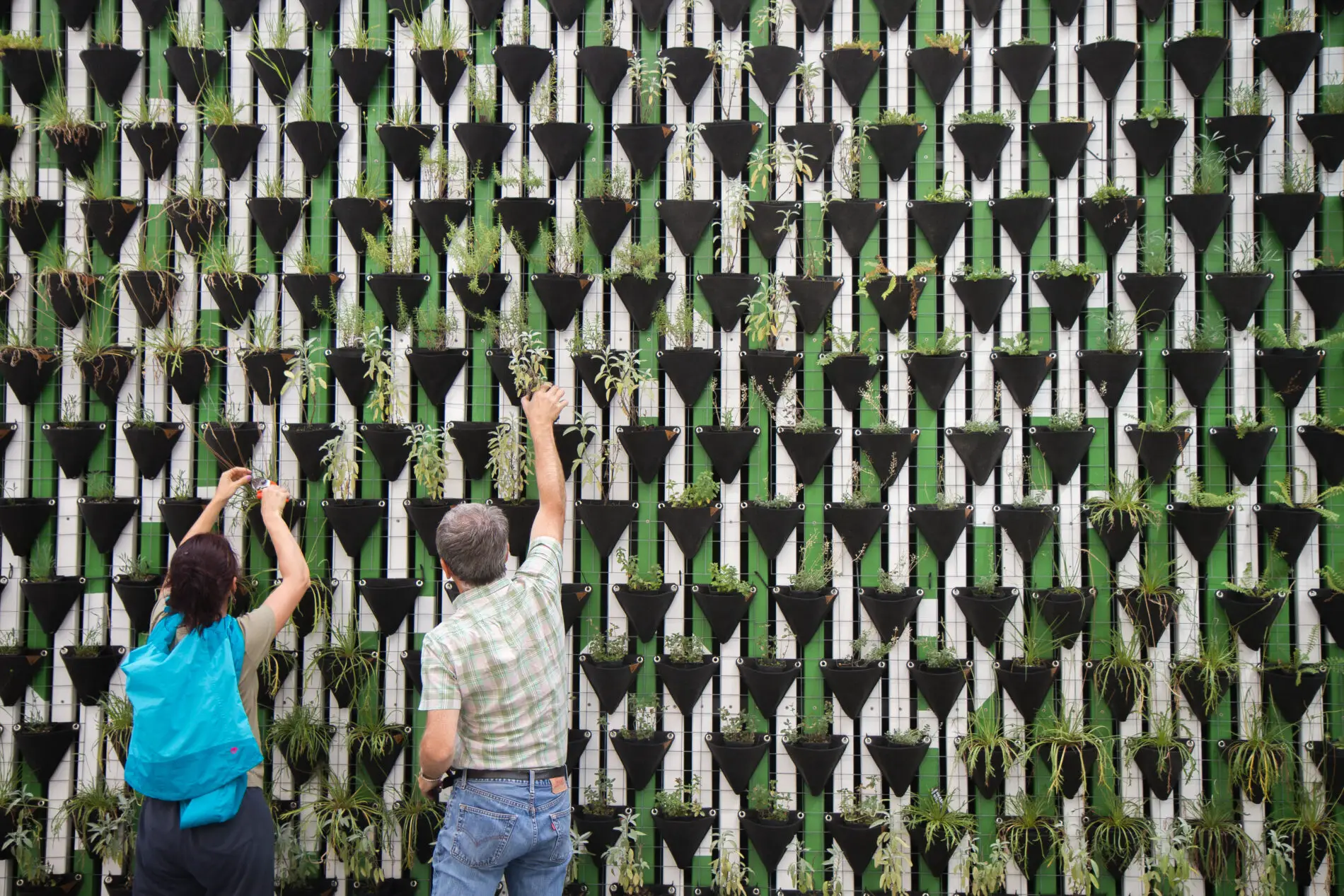If you want a garden of your own, and you don’t have sufficient space to start one, try making a vertical garden.
Not only does vertical gardening save land space, but this form also adds an aesthetic touch to the walls or platforms used.

Vertical gardening involves planting upwards, against upright support like a walk or pole.
Vegetables like cucumber, potatoes, tomatoes, and fruits like strawberries, are easy picks for planting in a vertical garden.
In this article, you’ll learn how to set up and maintain a vertical garden.
Table of Contents
Different types of vertical gardens.
From a small frame hung on the wall to an entire wall-sized garden, there are various garden-style methods. Some of them are:
- Pocket Gardening.
- Trellis.
- Pallet planting
- Vertical containers.
How to make your vertical garden.
After you decide on the type of vertical garden you want, you can go ahead to get all you need to set up and start planting.
How to set up a vertical garden.
- Pick a wall: This is the surface on which your plants will grow. It would be best if you chose an ugly wall to cover it up. But it would help if you considered the plants you would like to have in your garden—the position of the wall in respect to the sun matters. Also, if you already have a plant in mind, pick the wall that is in a position favorable to the growth and health of the plant you desire.
- Construct a frame: The vertical garden is built on a three-layer frame made from PVC pipes, plastic sheets, and fabric. Building the frame before hanging is better, as you can easily take it down. The bone structure of the frame is created by joining the PVC pipes with elbows and joints.
- Add plastic sheeting: The plastic sheeting is attached as extra support to the fabric to keep water from the walls.
- Attach the Fabric: Use two layers of fabric as the base on which the plants will live. Attach it with screws and stainless steel staples and ensure it is firmly secured.
- Create the Watering System: Moisture must constantly be present in the fabric so plants can grow. An irrigation system is made of poly tubing with lockable fittings. The system is attached to a water source.
- Select a plant: If you have built your vertical garden to favor the growth of a particular plant, you can skip this step. If not, there is a wide range of plant alternatives. You must research and ensure that the plant you select can survive in the vertical garden you have built.
What to plant in a vertical garden.
This is a list of vegetables you can grow in your vertical garden:
- Lettuce.
- Cabbage
- Greens
- Potatoes
- Beans
- Tomatoes
- Peppers
- Herbs
- Carrots
- Radishes
- Parsnips
You can also plant fruits like strawberries or flowers.
Final Thoughts
It does not matter how much space you have around you. You need a wall, sunlight, and water to create a vertical garden. With a vertical garden, you can cut down on your groceries budget since you can get vegetables from your garden.



